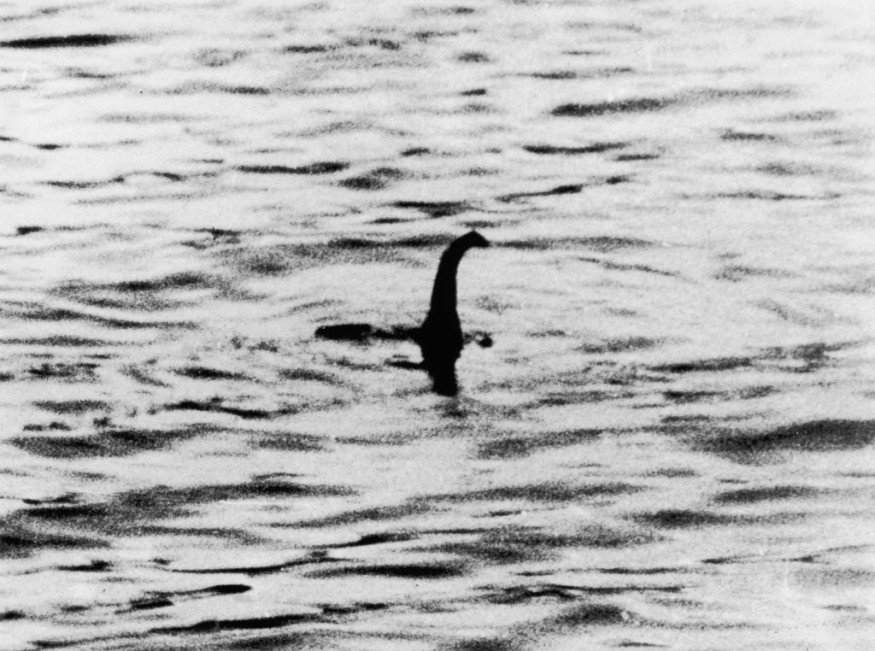
The Loch Ness monster is probably the most famous animal in history whose existence has not yet been confirmed, hence the interest of cryptozoologists in the beast. Since its discovery in the 20th century, many have claimed that they have seen the monster in Loch Ness, Scotland. However, the claims are often questionable.
A veteran Nessie hunter claimed that the Loch Ness monster just made its first sighting this year. The moment was catpured in a video of two objects moving parallel to each other on the loch's surface. The sighting has now been recorded on the Official Loch Ness Monster Sightings Register.
A view of the Loch Ness Monster, near Inverness, Scotland, April 19, 1934. The photograph, one of two pictures known as the 'surgeon's photographs,' was allegedly taken by Colonel Robert Kenneth Wilson, though it was later exposed as a hoax by one of the participants, Chris Spurling, who, on his deathbed, revealed that the pictures were staged by himself, Marmaduke and Ian Wetherell, and Wilson.
Mysterious Loch Ness Monster Makes First Appearance After 3 Months
Irishman Eoin O'Faodhagain, a veteran Nessie hunter who regularly records the creature's sightings via the Loch Ness webcam, shared a video of the mysterious monster making its first appearance after over three months of no official sightings of the beast.
A resident of the County Donegal in northwestern Ireland, O'Faodhagain had his first sighting back in 1987. Daily Star reported that O'Faodhagain was watching the webcam live-stream on the afternoon of March 23 when he spotted an unexplainable movement in the water. The video shows strange dark shapes moving about on the surface of the lake.
An unconvinced netizen suggested in the comment section that the movement was probably from a log or some debris or simple and common animal. However, Eoin disagreed.
"The more northerly object takes a sharp turn to the left leaving an unusual wake, you would have to rule out a log or debris, and it is not consistent of a seal to react in such a manner," he replied.
Gary Campbell, the keeper of the Inverness-based Register, has recorded more than 1,136 alleged sightings of the Loch Ness monster for over 26 years. According to him, the beginning of 2022 and the end of the winter season were usually the quiet time for the monster. However, it does not mean they do not have any reports early this year.
But like many of the alleged sightings, they do not make it to the registrar if they are explainable. Unlike the recent video that was deemed credible enough to be unexplainable, that is why it was added to the list. Watch the video of the first sighting of the beast this year at the end of this article.
ALSO READ: Researchers in Scottland Find Remnants of Nessy's Relatives-Or So It Seems
Is the Loch Ness Monster Real?
According to History, the Loch Ness monster was first reported on the local news on May 2, 1933. Local newspaper Inverness Courier reported an account of a local couple who claim to have seen an "enormous animal rolling and plunging on the surface."
It quickly became a media phenomenon that even London news outlets sent correspondents to Scotland and offered 20,000 pounds to whoever caught the beast.
After that first sighting, the interest in the Loch Ness monster steadily grew, especially when the couple claimed they saw the beast walking on land. Amateur investigators have scoured the lake for decades and even British universities launched sonar expeditions to the lake in the 1960s.
However, nothing conclusive was found except for some sonar signals that detected some type of large, moving underwater objects. By 1975, they combined sonar and underwater photography to look for the monster resulting in an image that vaguely shows a giant flipper of an aquatic animal.
Further investigations in the 1980s and 1990s only resulted in inconclusive readings and then in 1994, it was revealed that the 1934 photo was fake. But still, it did not dampen the enthusiasm of tourists and investigators for the legendary Loch Ness monster.
In 2019, researchers from New Zealand tried to catalogue all living species in the loch by extracting DNA from water samples and ruled out the possibility of a prehistoric marine reptile called plesiosaur. Prof Neil Gemmell, a geneticist from the New Zealand's University of Otago said they didn't find any evidence supporting the idea that there's a plesiosaur in the loch.
There was no shark, catfish or sturgeon DNA in Loch Ness based on their sampling. Instead, they found significant eel DNA. The data doesn't reveal the size, but Gemmell said giant eels in Loch Ness can be a possibility.
"Therefore we can't discount the possibility that what people see and believe is the Loch Ness Monster might be a giant eel," Gemmell said, per BBC.
RELATED ARTICLE : The Loch Ness Monster is a Giant Eel!
Check out more news and information on Loch Ness Monster in Science Times.











